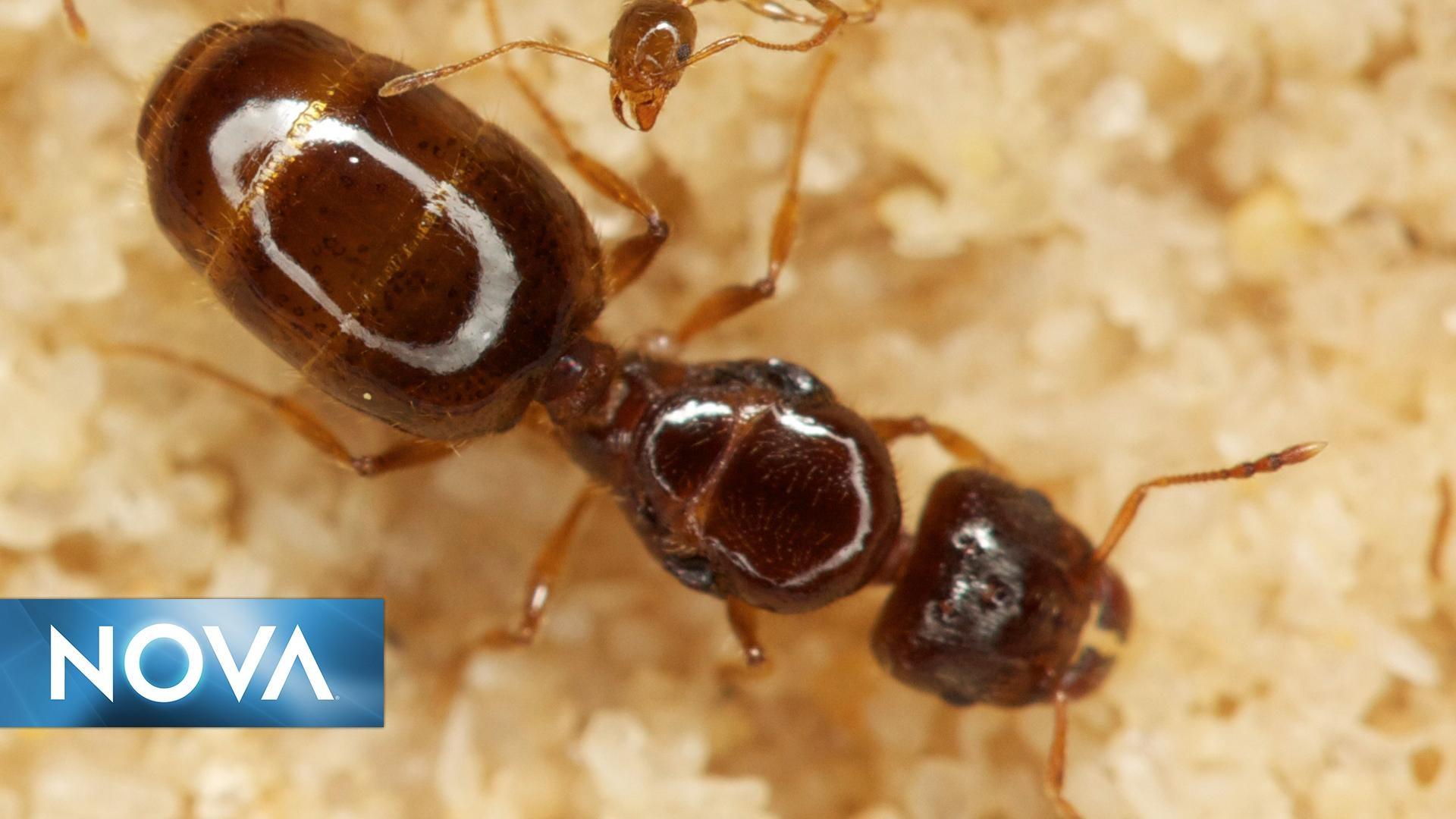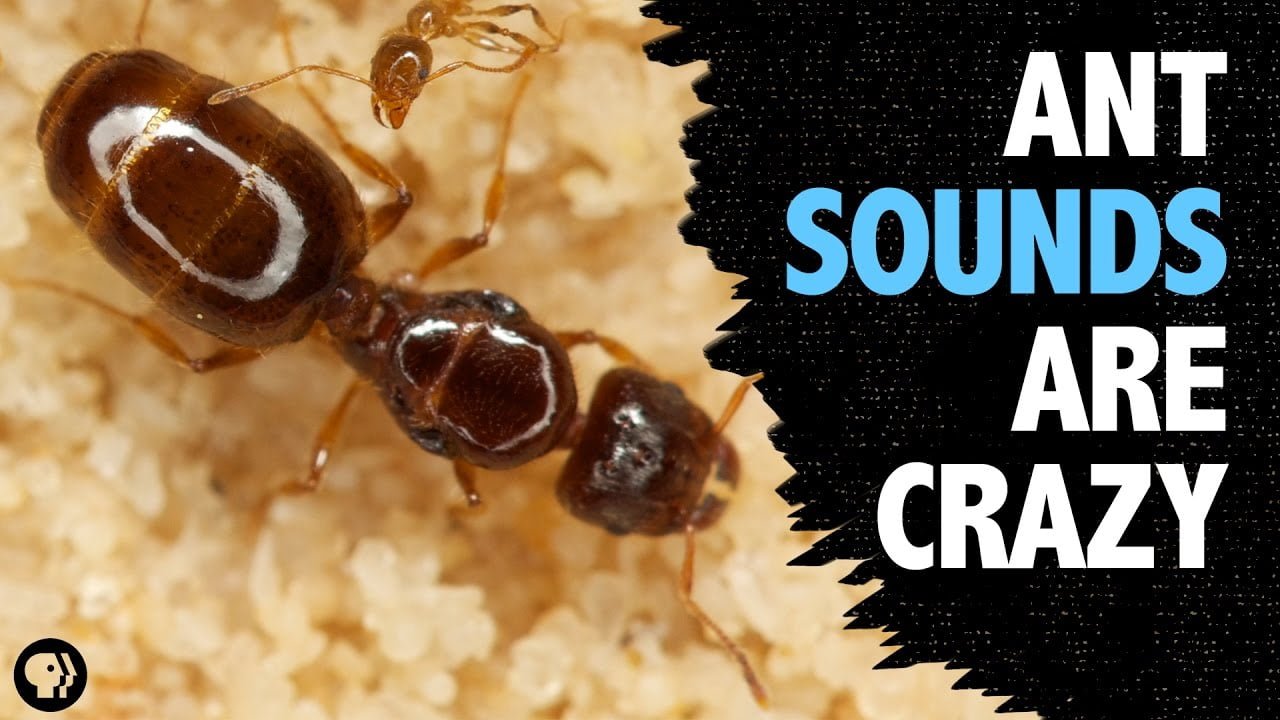Ants communicate through chemical signals and vibrations. They produce faint, rustling noises when walking or digging.
Ants are fascinating creatures that play crucial roles in ecosystems. Apart from being expert foragers and builders, ants also communicate with each other through sounds. Their sounds may be subtle and easily overlooked by human ears but are key to their social interactions and coordination within their colonies.
Through intricate chemical signals and vibrations, ants convey important information like danger warnings, food sources, and more. Understanding how ants sound can give us insight into their complex behaviors and communication methods. We’ll delve deeper into the sounds of ants and explore the significance of these auditory cues in their daily lives.
The Communication Methods Of Ants
Ants are fascinating creatures with distinctive communication methods. These tiny insects have developed unique ways to interact with one another, using various signals and cues to convey important information. Understanding the communication methods of ants can provide valuable insights into their complex social structure and behavior.
Chemical Signals
Ants heavily rely on chemical signals to communicate with each other. They produce and detect pheromones, which are chemical substances used to convey messages. These pheromones can communicate a wide range of information, such as food sources, danger, and navigational cues. By releasing and detecting these chemical signals, ants can effectively coordinate their actions and convey essential information to their colony members.
Tactile Communication
Tactile communication also plays a crucial role in ant interactions. Ants use physical contact, such as antennal tapping and grooming, to convey information. Through these tactile interactions, ants can impart specific messages related to tasks, colony status, and social hierarchy. This form of communication enables ants to coordinate their activities and maintain organization within the colony.
Vibrational Communication
Another intriguing communication method employed by ants is vibrational communication. By producing and detecting vibrations, ants can convey messages related to various activities, such as recruitment, alarm signals, and mating. Vibrational communication allows ants to communicate effectively in environments where other forms of signaling may not be feasible, such as in dark, enclosed spaces or over long distances.
Credit: www.eurekalert.org
The Significance Of Ant Sounds
Caste Differentiation
Ant sounds play a crucial role in caste differentiation within the colony.
Foraging Coordination
Through sound signals, ants coordinate their foraging activities efficiently.
Colony Defense
Ants use sound to alert each other and defend the colony against potential threats.
Types Of Ant Sounds
Ants communicate through a range of sounds, including stridulation, tapping, and rustling. These noises help them convey messages such as warning of danger, seeking food, or locating their colony. Typically, the sounds are not audible to humans without the aid of specialized equipment.
Ants may be small creatures, but they are capable of producing various sounds to communicate with one another. Different types of ant sounds serve different purposes, ranging from alarm signals to mating calls. Let’s explore the distinctive categories of ant sounds:Stridulation
Ants create sound by rubbing parts of their bodies together, a process known as stridulation. This sound is often produced by worker ants to communicate with the colony or as a warning signal.Drumming
Through a rapid tapping motion, ants can create a drumming sound to convey information to other members of their colony. This distinctive sound is often associated with aggression or excitement.Rasping
Rasping is a common form of ant communication where ants rub body parts to produce a friction-based sound. This sound is often used during confrontations or territorial disputes.Purring
When ants are engaged in peaceful interactions or mutual grooming, they may produce a gentle purring sound. This soothing sound is a sign of harmony and cooperation within the colony.
Credit: www.youtube.com
Why Do Ants Make Sounds?
Ants, like many other creatures, communicate with each other through various sounds. These sounds serve different purposes, such as territorial defense, mating rituals, and identifying colony members.
Territorial Defense
Ants make sounds as a form of territorial defense, warning other ants to stay away from their territory. This helps to prevent conflicts and protect valuable resources.
Mating Rituals
During mating rituals, ants produce specific sounds to attract potential mates and communicate their availability for mating. This plays a crucial role in the reproduction and expansion of ant colonies.
Identifying Colony Members
Ants use sound to identify their fellow colony members and distinguish them from intruders or potential threats. This helps maintain the cohesive structure of the colony and fosters effective teamwork among the ants.
Tools For Studying Ant Sounds
If you’ve ever wondered what ants sound like, you’ll be amazed to know that these tiny insects actually produce a range of noises! Scientists have developed various tools to study ant sounds and understand their communication methods. Let’s delve into the fascinating world of ant acoustics and explore the remarkable tools used to uncover their secrets.
Acoustic Monitoring
A key method for studying ant sounds is through acoustic monitoring. This technique involves placing specialized sensors or microphones near ant colonies to capture sound waves and analyze their patterns. Acoustic monitoring allows researchers to eavesdrop on the intricate audio signals that ants use to communicate with one another.
High-speed Cameras
Another tool employed by researchers is high-speed cameras. These advanced devices can record ant movements at incredibly fast frame rates, enabling scientists to closely observe their behaviors and interactions. By pairing visual observations with sound recordings, researchers can gain a deeper understanding of the link between ant actions and the corresponding sounds produced.
Microphones
Microphones play a crucial role in studying ant acoustics. Specialized microphones are used to capture the faint sounds emitted by ants, allowing researchers to identify and analyze their distinct audio signals. These microphones are designed to be highly sensitive, ensuring that even the subtlest ant sounds are recorded for further analysis.
To sum up, scientists employ a range of tools to study ant sounds, including acoustic monitoring, high-speed cameras, and specialized microphones. By utilizing these tools, researchers can uncover the intricate world of ant communication and delve into the fascinating array of sounds produced by these tiny insects.

Credit: www.pbslearningmedia.org
Research Findings
In recent years, researchers have made fascinating discoveries about the sounds ants produce and how they communicate. By studying these tiny creatures and analyzing their acoustic signals, scientists have shed light on the intricate world of ant communication. Let’s delve into some of the research findings that have brought us closer to understanding what ants sound like.
Acoustic Differentiation Between Caste Members
One notable research finding is that ants exhibit acoustic differentiation between different members of their colonies. This means that different castes within an ant colony produce distinct sounds, potentially serving as a form of communication specific to their roles.
Studies have shown that worker ants and queen ants produce different types of sounds with varying frequencies and durations. Worker ants, responsible for foraging and other tasks, produce short, high-pitched chirping sounds. On the other hand, queen ants, who are responsible for reproduction, emit longer, lower-frequency sounds. These differences in acoustics allow ants to identify and distinguish between individuals of various castes.
Frequency Analysis Of Ant Sounds
Frequency analysis is a powerful tool used by scientists to understand the nature of ant sounds. By subjecting ant vocalizations to detailed analysis, researchers have found that ant sounds range across a wide frequency spectrum.
Worker ants’ chirping sounds, for example, typically fall within the ultrasonic range, making them difficult for humans to detect without specialized equipment. In contrast, queen ants produce sounds within the audible range for humans, enabling us to appreciate the fascinating conversations taking place within an ant colony.
Behavioral Responses To Playback Experiments
Another valuable research approach involves conducting playback experiments to observe ants’ behavioral responses to specific sound stimuli. These experiments have revealed fascinating insights into how ants react to different sounds and how their behaviors may be influenced by acoustic signals.
For instance, studies have shown that when exposed to recorded queen ant sounds, worker ants tend to become more alert and exhibit increased activity levels. This suggests that queen ant vocalizations play a crucial role in coordinating colony activities and influencing the behavior of the worker ants.
Furthermore, playback experiments have demonstrated that some ant species are capable of recognizing and responding differently to sounds produced by predators or competing colonies. These findings highlight the importance of sound communication in ants’ survival strategies and their ability to adapt to changing environmental conditions.
In conclusion, research findings in the field of ant acoustics have unveiled a wealth of fascinating information about how these tiny creatures communicate through sound. From acoustic differentiation between caste members to frequency analysis of ant vocalizations, and behavioral responses to playback experiments, scientists continue to unravel the mysteries of ant communication and gain insights into their complex social lives.
Frequently Asked Questions For What Do Ants Sound Like?
What Do Ants Sound Like?
Ants do not make direct sounds like other animals. They communicate through pheromones, vibrations, and stridulation. Soldier ants can make a hissing sound by rubbing their mandibles together, while some species produce faint clicking or tapping noises when moving. However, these sounds are often too low for humans to hear without specialized equipment.
How Do Ants Communicate?
Ants communicate through various methods, including pheromones, vibrations, and tactile interactions. They release chemicals called pheromones to leave trails, mark territory, or signal danger. Additionally, ants use their antennae to detect vibrations, allowing them to convey messages. They can also use their antennae to touch or tap other ants to communicate specific information.
Why Do Ants March In A Line?
Ants march in a line, also known as an ant trail, to enhance efficiency and effectiveness in their foraging activities. By following a trail, ants minimize the time and energy required to locate food sources. The trail system allows them to coordinate their efforts and pass information about food source location to the rest of the colony, ensuring a smooth workflow.
Conclusion
Ants communicate using a variety of sounds, from stridulations to vibrations. Understanding the sounds of ants can provide valuable insight into their behavior and social structure. By listening to and studying ant sounds, we can gain a deeper understanding of these fascinating creatures and their role in the ecosystem.

I’m MD Tanvir, and I bring years of expertise gained from working closely with pest control companies to the forefront. My journey in the industry has inspired me to launch Bug Battler, a platform aimed at equipping people with the know-how to combat pests autonomously. Through Bug Battler, I aim to empower individuals with practical insights to tackle pest infestations effectively.

